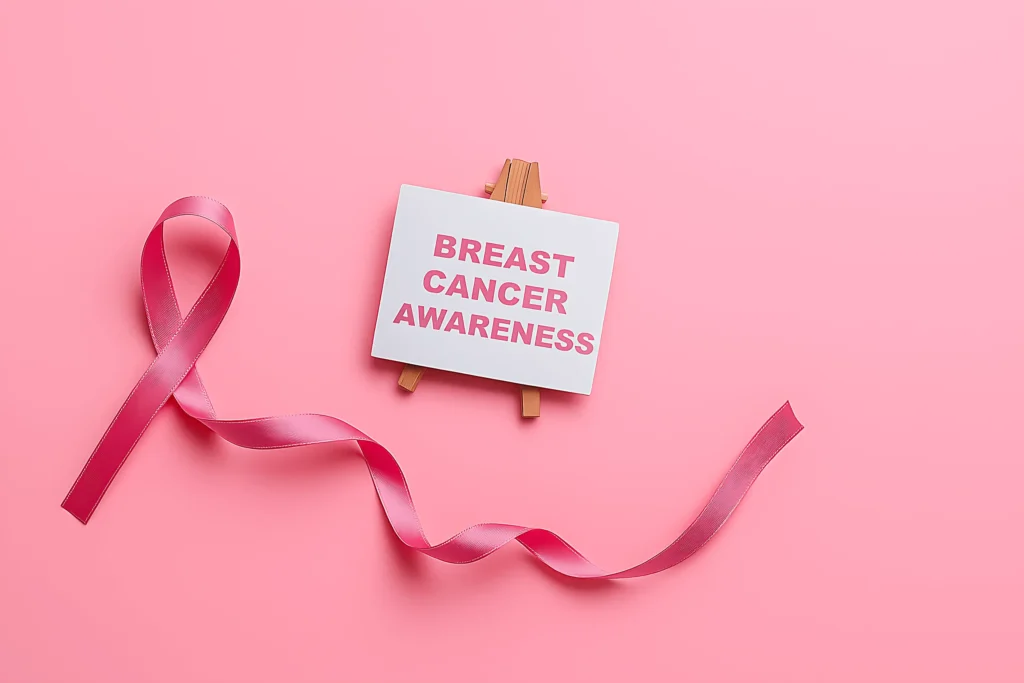
Intro
Pink is more than a color. During Breast Cancer Awareness Month, it’s a shared language of care: a way to honor journeys, start conversations, and guide people toward trustworthy resources. This explainer covers how pink became the symbol, what the ribbon communicates today, and simple, respectful ways to participate—at your pace.
How pink became the shared symbol
Community advocates, survivors, and organizations popularized pink ribbons and pink clothing as a visible sign of support. The idea spread because it was simple, inclusive, and easy to act on—anyone could wear a pin, add a ribbon to a profile photo, or choose pink for an event. Over time, “wearing pink” during October became a quick way to say: I care, I’m listening, let’s help.
Symbols spark connection; connection turns into real support.
A three-step callout illustrating how the pink ribbon leads to community and then action.
What the pink ribbon communicates

- Unity & solidarity. “You’re not alone.”
- Remembrance. Honoring loved ones and the stories behind each ribbon.
- Support right now. Encouraging practical help and stigma-free conversations.
- Awareness & education. Pointing to screening guidance and trusted sources.
- Action. Turning care into volunteering, donations, and community events.
Respectful ways to participate (that actually help)
- Wear pink with purpose. Add a ribbon pin, scarf, tee, or accessory and share why it matters to you.
- Share resources, not rumors. Link to reputable hubs (and our Pink October page) instead of medical advice.
- Support someone you know. Ask what would help: a ride, a meal, quiet company, help with admin.
- Donate transparently. If you fundraise, include the beneficiary and share receipts afterward.
- Be inclusive. Use people-first language and remember that experiences vary (including men and gender-diverse people).
What to wear on Wear-Pink Day (quick ideas)
- Classic ribbon pin (lapel, bag, or lanyard).
- Soft pink layers or a single accent (scarf, hat, socks).
- Work/school-friendly accessories if you have a dress code.
- Community flair: badges or stickers for groups; share a group photo with a link to resources.
- Prefer not to wear pink? Share the hub, donate, or volunteer—support isn’t one-size-fits-all.
(Read the full style guide soon in: “What to Wear on Wear-Pink Day.”)
How to talk about it (kind, pressure-free)
- Lead with empathy; avoid assumptions about someone’s journey.
- Ask, don’t advise. Share official guidance links; skip unsolicited medical opinions.
- Keep comments and captions inclusive (gender-neutral where appropriate).
- Pair posts with a resource link and a gentle invite to learn more.
🩷 Related Reading:
- Pink October Hub →
- Breast Cancer Risk Factors →
- Breast Self-Exam →
- What to Wear on Wear-Pink Day →
FAQs
It’s a visible way to show solidarity, honor journeys, and guide people to trusted resources during Breast Cancer Awareness Month.
Unity, remembrance, and support—plus an invitation to learn and take action.
Dates vary by country and organization. Choose a day in October that works for your community or follow a local calendar.
It starts conversations and directs attention. Pair it with sharing reputable info, offering support, or donating/volunteering.
Share the hub, amplify events, volunteer time, or contribute to organizations you trust.
No—pink raises awareness. Always follow your region’s screening guidance and talk with a clinician about personal risk.
Compliance note
This explainer is informational and not medical advice. Always follow your local screening guidance and speak with a qualified professional about personal risk.







